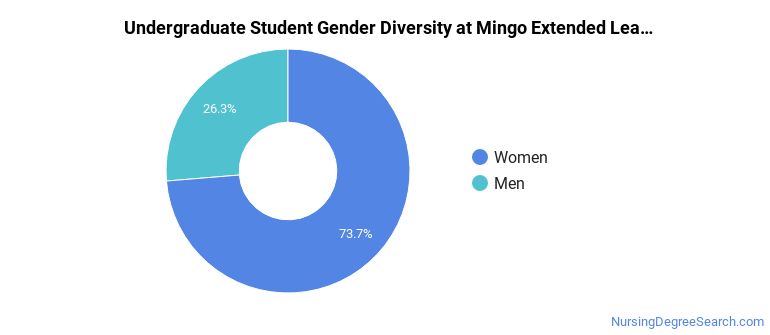Mingo Extended Learning Center Nursing Programs
Mingo Extended Learning Center is a public institution situated in Delbarton, West Virginia. Mingo Extended Learning Center is located in the countryside, which is perfect for students who enjoy a rural lifestyle.
Where Is Mingo Extended Learning Center?

Contact details for Mingo Extended Learning Center are given below.
| Contact Details | |
|---|---|
| Address: | 165 Bulldog Blvd, Delbarton, WV 25670 |
| Phone: | 304-475-3347 |
| Website: | www.mingoschools.com |
How Do I Get Into Mingo Extended Learning Center?
You can apply to Mingo Extended Learning Center online at: www.mingoschools.com/Page/2363
Admission Requirements for Mingo Extended Learning Center
| Submission | Required? |
|---|---|
| High School GPA | 3 |
| High School Rank | 3 |
| High School Transcript | 1 |
| College Prep Program | 3 |
| Recommendations | 1 |
| SAT or ACT Scores | 3 |
| TOEFL | 3 |
How Hard Is It To Get Into Mingo Extended Learning Center?
Approximately 33% of accepted students are men and 67% are women. The acceptance rate for men is 100%, and the acceptance rate for women is 83%.
Can I Afford Mingo Extended Learning Center?
Mingo Extended Learning Center Undergraduate Student Diversity
Gender Diversity
Of the 19 full-time undergraduates at Mingo Extended Learning Center, 26% are male and 74% are female.

Racial-Ethnic Diversity
The racial-ethnic breakdown of Mingo Extended Learning Center students is as follows.

| Race/Ethnicity | Number of Grads |
|---|---|
| Asian | 0 |
| Black or African American | 0 |
| Hispanic or Latino | 0 |
| White | 19 |
| International Students | 0 |
| Other Races/Ethnicities | 0 |
Mingo Extended Learning Center Nursing Concentrations
The table below shows the number of awards for each concentration.
| Major | Undergraduate Certificate | TOTAL |
|---|---|---|
| Licensed Practical/Vocational Nurse Training | 19 | 19 |
| TOTAL | 19 | 19 |
References
*The racial-ethnic minorities count is calculated by taking the total number of students and subtracting white students, international students, and students whose race/ethnicity was unknown. This number is then divided by the total number of students at the school to obtain the racial-ethnic minorities percentage.
More about our data sources and methodologies.
